I Would Walk 500 Miles*
*Remember that song from The Proclaimers??
By Patrice Lavigne
Feature Photo of Kesugi Ridge, part of the Proposed Alaska Long Trail, by Chris Beck, Alaska Trails
Alaska offers many of the most superlative outdoor experiences possible in the United States. But it does not yet have a “long trail” – the equivalent of a Pacific Crest Trail or Appalachian Trail. Alaskan trail advocates are now pushing for the establishment of an Alaska Long Trail that would extend 500 miles from Fairbanks to Seward, closely following the George Parks Highway from Fairbanks to Talkeetna, then through Chugach State Park, and along the Iditarod Trail south to Seward. The promoters have had success in attracting support and funding for the concept, including in the local Denali Borough community where there has been interest, investment, and planning to bolster trails that could eventually become part of the Alaska Long Trail. As the idea gains traction, DCC felt it would be useful to review the project.
History of the Long Trail Idea
The conception for a long trail in Alaska took shape in the late 1990s under former governor Tony Knowles. The initial “Trans Alaska Trail” proposal was for a 900-mile route connecting the Beaufort Sea to Valdez following the Trans-Alaska Pipeline Corridor.
Around the same time, Alaska Trails, an Anchorage-based nonprofit dedicated to trail-related projects and programs, developed the Statewide Trails Investment Strategy document, which led to a realization that connecting existing tracks on public lands could form a backbone for a workable long trail route. Thus, the Long Trail goal morphed into a more realistic 500-mile continuous pathway from Fairbanks to Seward.
According to Alaska Trails, the Long Trail is intended to be a non-motorized continuous path, like the Pacific Crest Trail or the Appalachian Trail. However, since Alaskans recreate in a variety of ways, the route will likely vary by location and season. For example, the Tanana State Forest section between Nenana and Fairbanks will rely on the old logging roads, so would probably accommodate bikes, ATVs, and snowmachines as well as foot traffic.
Alaska Trails and a second Anchorage-based nonprofit, Alaska Outdoor Alliance, have spearheaded the Long Trail effort, but there are many other supporters, including public land management agencies, Native organizations, businesses, and individual volunteers. In general, the organizations have relied on recreation infrastructure grants and investments at the regional level for shovel-ready projects that would advance the development of the Alaska Long Trail.
The federal and state governments are ready to hike
More recently, there has been a surge in interest and investment in outdoor recreation at the federal and state government level, generating broad bipartisan support.
In December 2022, Congress passed an omnibus appropriations package for fiscal year 2023 under which Senator Lisa Murkowski negotiated provisions for Alaska Long Trail projects, including building bridges and filling in missing segments to complete the Iditarod National Historic Trail in the south. Murkowski also helped push forward $2.2 million in funds for the design and construction of pedestrian pathways along the Parks Highway corridor in the Denali Borough.
Simultaneously, Governor Mike Dunleavy allocated omnibus funds for Long Trail projects in the current 2023 state capital budget, and specifically approved seven projects, mostly in the Anchorage area. Previously, Dunleavy vetoed appropriations for long trail projects in the 2022 and 2023 state budgets, mainly due to unrelated and unresolved budgetary issues.
For the state’s fiscal year 2024 budget—which will start July 1, 2023—there are 14 Long Trail projects totaling $9.5 million being proposed, one of which is a separated 5-mile path along the east side of the George Parks Highway for non-motorized travel from Carlo Creek (milepost 224) to Denali Park Village (milepost 230) with an estimated cost of $3.7 million.
The local Long Trail
Although not officially a part of the Long Trail yet, there are a number of projects underway locally that could be a part of the route through the Denali Borough.
First of all, if you drove through Denali Park Village during the summer of 2022, you couldn’t miss the construction around milepost 231 by the Alaska Department of Transportation and Public Facilities (AKDOT&PF). Besides widening the George Parks Highway, there’s a new wayside on the east side of the highway with expanded parking for the existing Oxbow/Triple Lakes trails and the relocation of the DNP&P entrance sign for safer photo-taking opportunities. Construction of the wayside will continue through summer 2023 to further develop the 2-acre trailhead area with vault toilets and picnic tables, but the hope is to have it open for public use before the end of the summer.
Other AKDOT&PF projects in that area include a paved pedestrian/bike path underneath the south side of the Crabbies Crossing Bridge connecting the east side (boat launch/Denali Park Village/Denali Education Center) and west side (Grizzly Bear Cabins), and a pedestrian path under the north side of the bridge to connect the new parking lot to the Triple Lakes Trail. These pedestrian pathways relied on the $2.2 million allocated under the state’s fiscal year 2023 budget.
Even though it was part of the original AKDOT&PF plans, the construction project ultimately omitted a pedestrian bridge over the Nenana River, so pedestrians still must walk on the shoulder of the Crabbies Crossing Bridge. The National Park Service (NPS) has taken the initiative to remedy this safety issue, and has applied for and received Federal Land Access Program (FLAP) grants for a pedestrian bridge at the old highway crossing at the McKinley Village boat launch. Construction of the bridge is expected in 2025 or 2026.
The wayside development ties into a grander NPS Nenana River Corridor Trails project, which Denali Citizens Council previously covered and has public comments due March 30. NPS has proposed 17 miles of trails connected to the new Oxbow/Triple Lakes Trailhead Wayside and the Denali entrance area for an estimated cost of $3.9 million.
The proposed plan includes an 8-mile multi-use trail roughly paralleling the George Parks Highway with an 8-foot width and crushed gravel surface for bikes and pedestrians. This trail would include a bridge over Riley Creek to connect with the Riley Creek Day Use Area. An additional 9 miles of narrower trails leaving from the new wayside and following the Nenana River would be designed for hiking only.
DNP&P is taking public comments about the proposed trails through March 30, 2023, and NPS has budgeted to begin construction this summer 2023. According to Jennifer Johnston, an outdoor recreation planner for DNP&P, NPS anticipates this would take about five seasons to complete in a phased rollout designed to minimize impacts on visitors.
Additionally, two externally-sponsored projects could change the outcomes of the NPS plans in the Nenana River Corridor. First of all, the Alaska Railroad is contemplating moving its tracks entirely to the west side of the George Parks Highway to accomplish a long-held goal of removing the at-grade highway crossing. Second, the planned route of the Alaska LNG (natural gas) pipeline project crosses through this area. Neither of those projects yet have funding, and their futures are uncertain.
The Denali Borough is another active participant securing funding and making plans for pathways off the George Parks Highway. The Borough added a Department of Parks and Recreation and Teresa Floberg serves as the first-ever Community Development Director. The Denali Borough simultaneously was awarded FLAP funds in 2019 and 2021 with the intention of improving safety for parking and access to Bison Gulch and Mt. Healy. A site assessment with AKDOT&PF and NPS determined Antler Ridge at milepost 245 of the George Parks Highway to be a more sustainable location.
With the help of NPS’s Rivers, Trails, and Conservation Assistance (RTCA) program, Antler Ridge has a new parking area. The next stage will include installing restrooms, upgrading trails, and putting out highway signs announcing the trailhead. Thanks to Denali Borough resident Isabel Brown’s Eagle Scout project, there is an interpretive kiosk display focused on Dall sheep at the new trailhead.
The Borough’s work is another step benefiting the development of the Long Trail. As part of Teresa’s position, she participates in the Alaska Long Trail Coalition to provide strategic route planning on the regional level and bring together stakeholders. Teresa also appointed nine members on the Community and Outdoor Recreation Committee, which meets every other month.
“A next important step will be to establish a Denali region working group comprised of land managers, public agencies, area leaders, and of course, our own Community and Outdoor Recreation Committee,” Teresa said.
According to Denali Borough Mayor Clay Walker, there is lots of excitement in the borough to expand Denali’s frontcountry recreational opportunities and for a potential long trail.
“Outdoor recreation is a growing part of our local economy. Great trails and activities attract visitors, but these improvements also enhance our local quality of life,” said Mayor Walker.
The Long Trail long game
Major trails do not only have recreational benefits. Over time, they begin to shape surrounding land use and economic activity. The involved parties agree the initiative has economic benefits. According to Lee Hart, founder of Alaska Outdoor Alliance, Alaska has the 7th largest recreation economy in the United States and outdoor recreation represents 4.2 percent of the state’s economy. The trail is one avenue to growing the state’s outdoor recreation sector, as long trails historically have power on local economies and businesses, providing more reasons for visitors to slow down, stick around, and spend money on lodging, stores, restaurants, and guides. For residents, having access to trails promotes healthy lifestyles. The flip side is attracting additional tourist activity in an already saturated area and making sure the growth of outdoor recreation does not outpace the state’s ability to maintain its infrastructure.

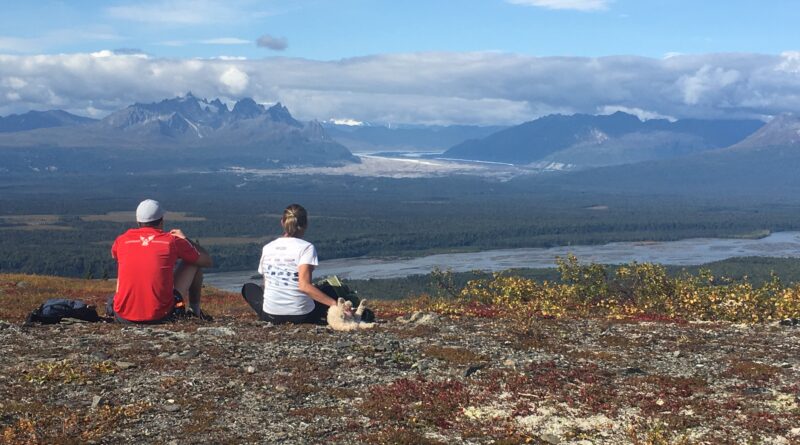
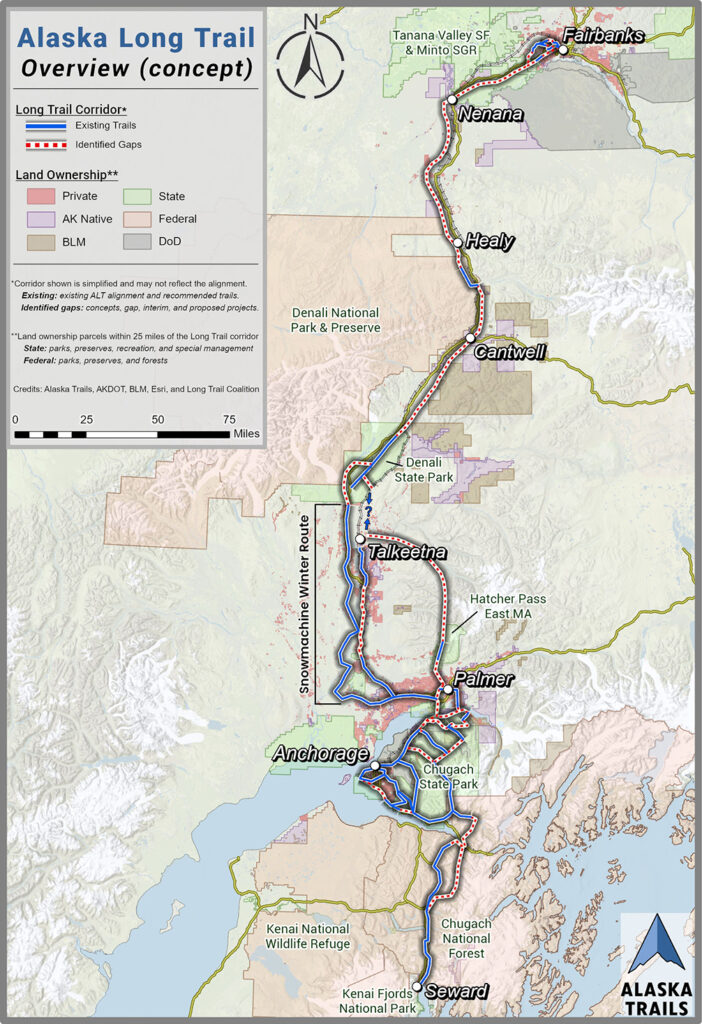
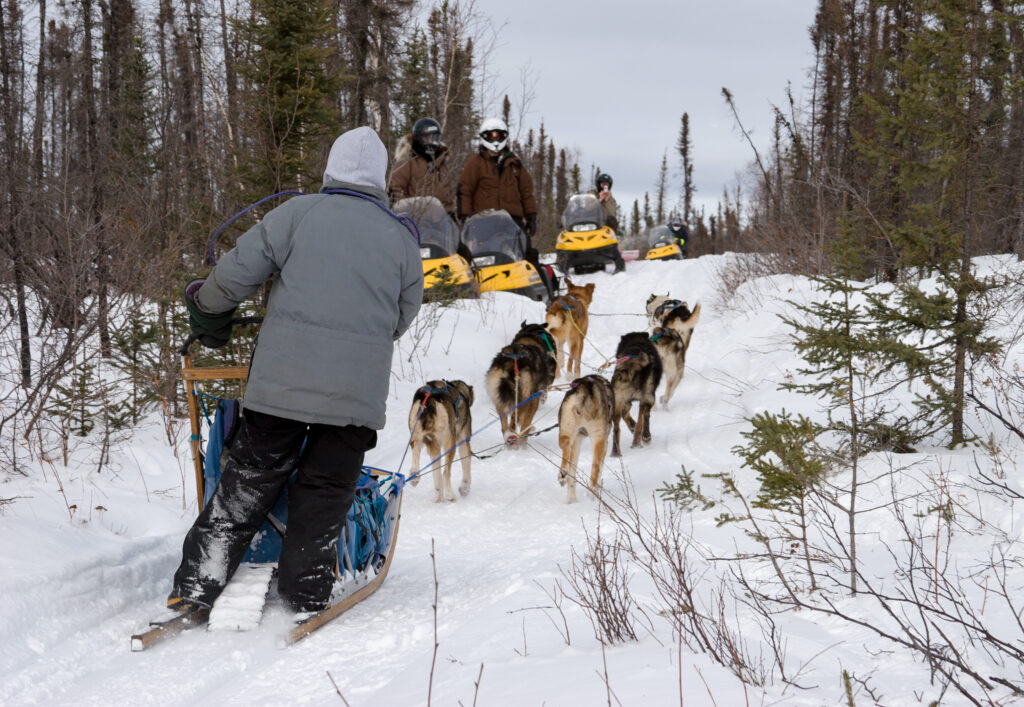
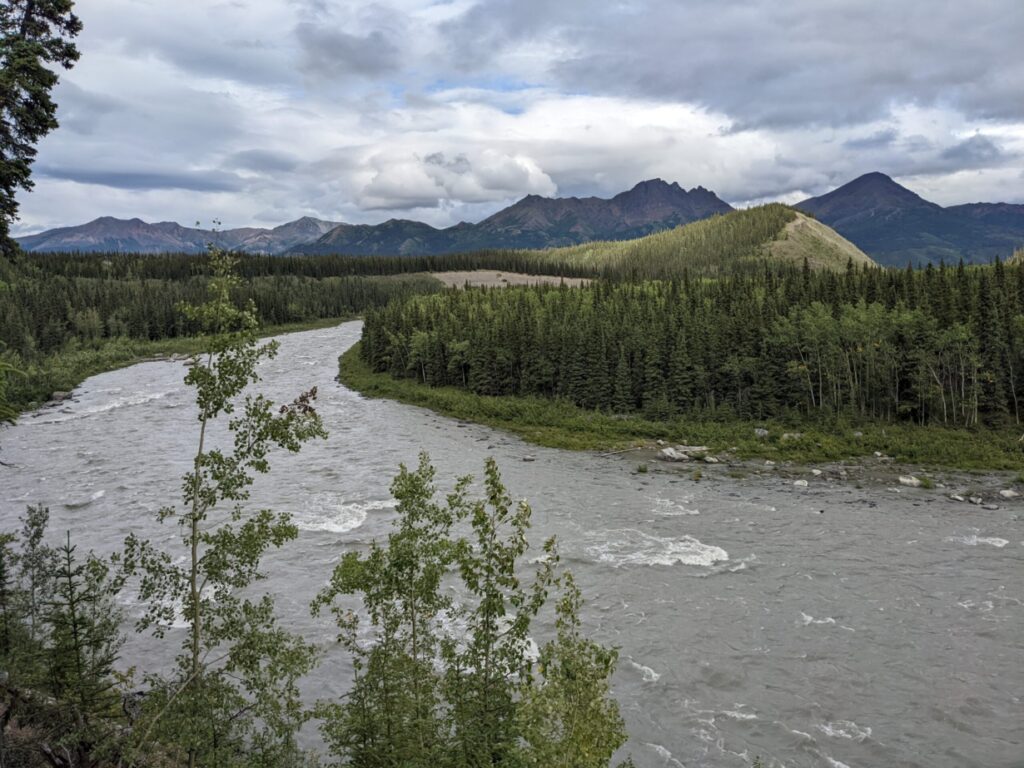
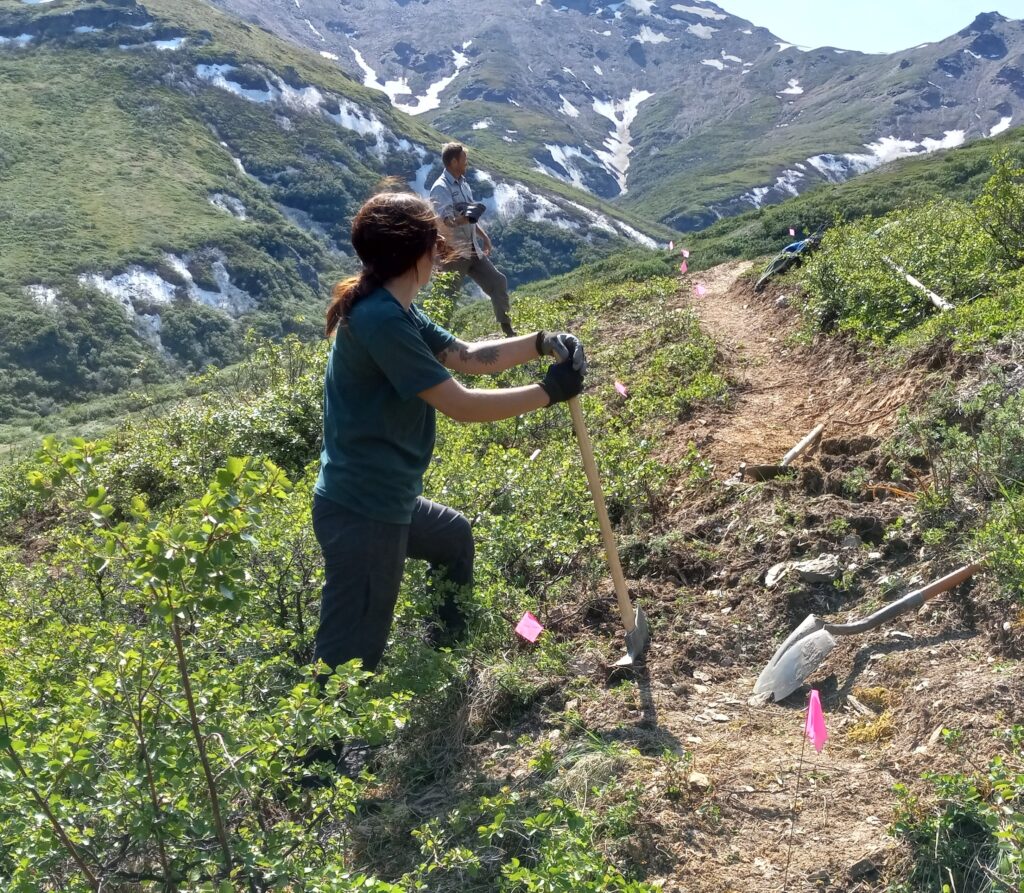

Pingback: Currently: March – Wandering La Vignes
The short comment is Yes, I believe a long trail through Alaska would be a positive change.